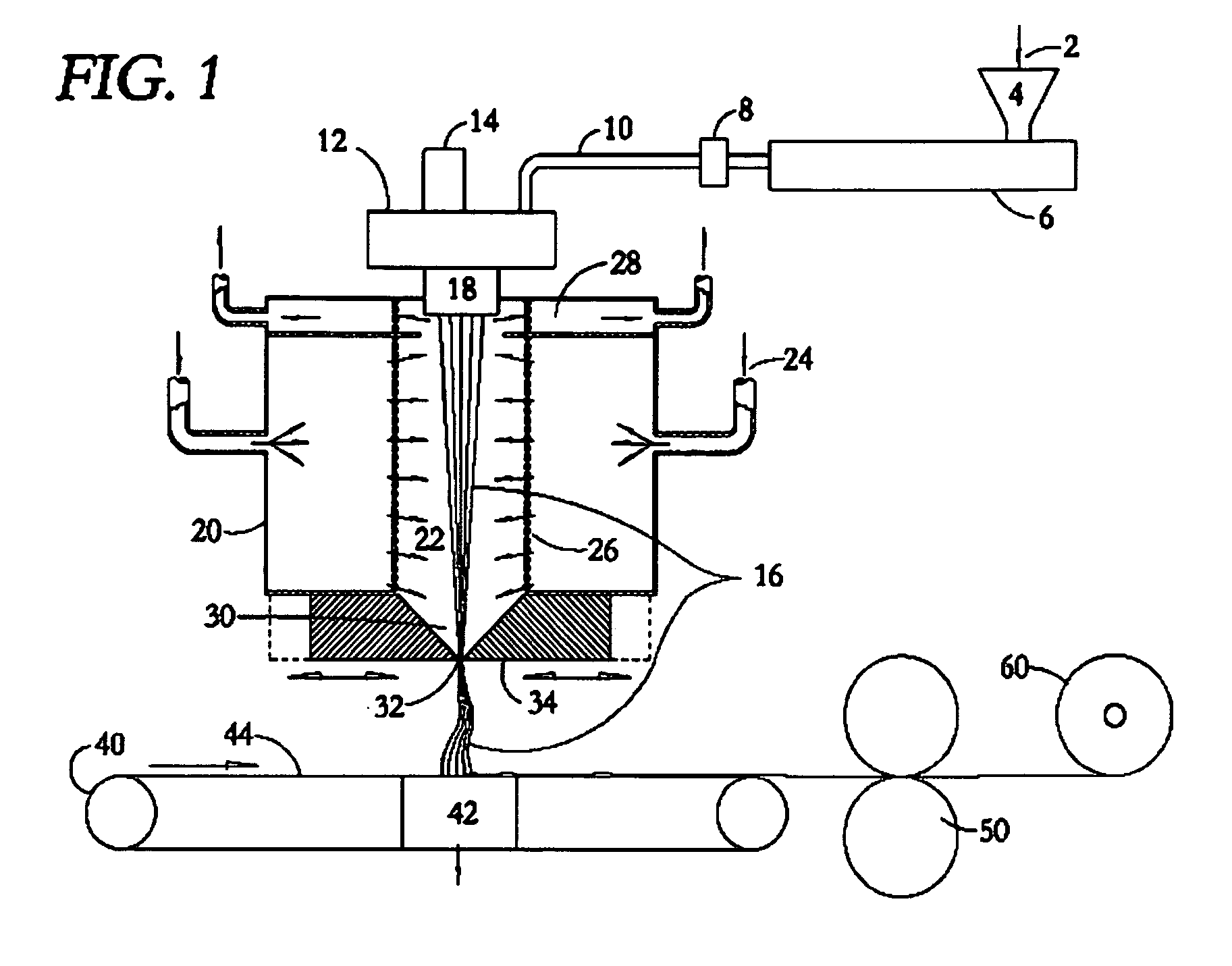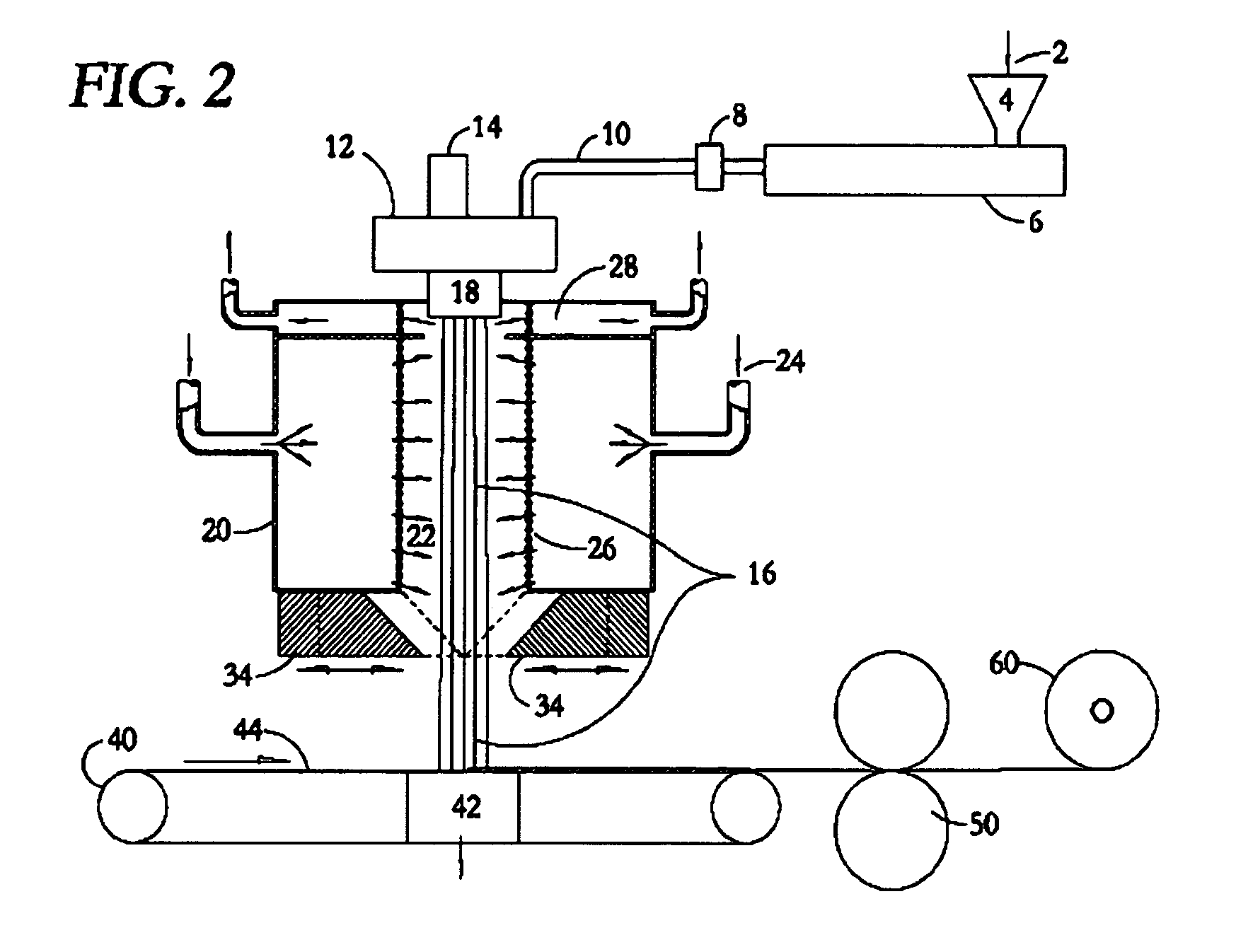Method and apparatus for forming melt spun nonwoven webs
a thermoplastic polymer and non-woven technology, applied in the direction of chemistry apparatus and processes, manufacturing tools, other domestic objects, etc., can solve the problems of filament breakage, high air and fiber velocities so as to achieve uniform cross-machine uniformity control, constant filament distribution, and limited machine width
- Summary
- Abstract
- Description
- Claims
- Application Information
AI Technical Summary
Benefits of technology
Problems solved by technology
Method used
Image
Examples
Embodiment Construction
[0017] The following detailed explanations of FIGS. 1 and 2 of the preferred embodiments reveal the methods and apparatus of the present invention. The architecture depicted in the drawings is a conceptual diagram illustrating major functional units, and does not necessarily illustrate physical relationships.
[0018] The present invention harnesses the positive aspects of both eductive and non-eductive (and hybrid) systems into a more efficient and simpler design. More importantly, the invention solves many of the problems associated with conventional nonwoven spun bond systems including: spinning speed limitations, energy consumption, machine element cleanliness (i.e., hygiene), web uniformity, capital costs and process control. The invention also incorporates aspects of another, different type of nonwoven web forming technology, the meltblown process, as shown in U.S. Pat. No. 3,825,380 (Harding et al.) to help improve web formation control.
[0019] While the invention is described ...
PUM
| Property | Measurement | Unit |
|---|---|---|
| Pressure | aaaaa | aaaaa |
| Angle | aaaaa | aaaaa |
| Length | aaaaa | aaaaa |
Abstract
Description
Claims
Application Information
 Login to View More
Login to View More - R&D
- Intellectual Property
- Life Sciences
- Materials
- Tech Scout
- Unparalleled Data Quality
- Higher Quality Content
- 60% Fewer Hallucinations
Browse by: Latest US Patents, China's latest patents, Technical Efficacy Thesaurus, Application Domain, Technology Topic, Popular Technical Reports.
© 2025 PatSnap. All rights reserved.Legal|Privacy policy|Modern Slavery Act Transparency Statement|Sitemap|About US| Contact US: help@patsnap.com



